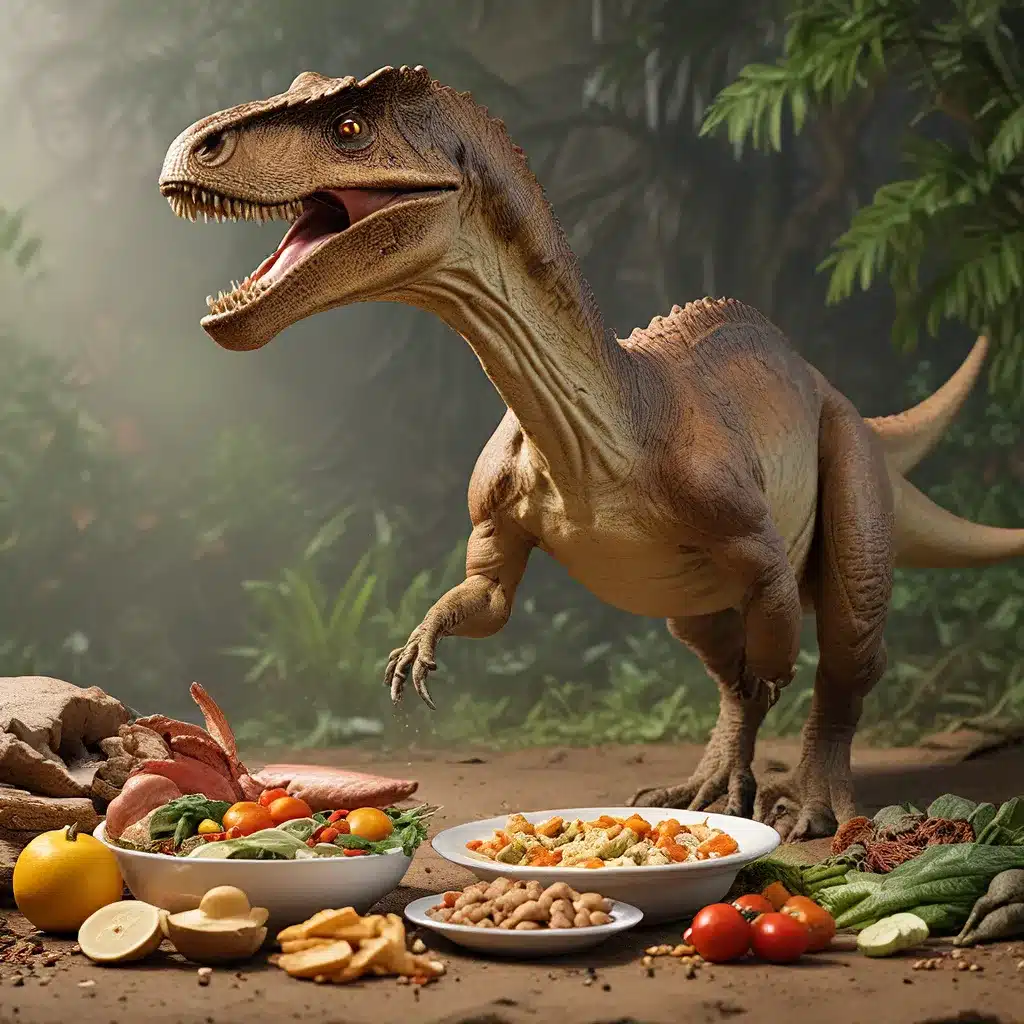
Dinosaurs, those enigmatic creatures that once roamed the Earth, have long captivated our collective imagination. From the towering Tyrannosaurus rex to the gentle Brontosaurus, these ancient behemoths have left an indelible mark on our understanding of life in the prehistoric world. One of the most fascinating aspects of dinosaur research is unraveling the intricacies of their feeding habits – a pursuit that has led to numerous groundbreaking discoveries and continues to shed light on the diverse strategies employed by these remarkable animals.
Revealing Dinosaur Diets Through Fossilized Remains
The study of dinosaur diets relies heavily on the analysis of fossilized remains, a process that has evolved considerably over the years. Paleontologists, armed with an array of sophisticated techniques, have been able to piece together a more comprehensive understanding of what these creatures consumed and how they obtained their sustenance.
One of the primary methods used to investigate dinosaur diets is the examination of fossilized teeth. The shape and structure of teeth can provide valuable insights into an animal’s feeding preferences. For instance, the serrated edges of carnivorous dinosaur teeth suggest a diet of tearing and slicing through meat, while the flat, grinding surfaces of herbivorous dinosaurs indicate a preference for plant-based foods.
In addition to dental analysis, coprolite (fossilized feces) can offer a wealth of information about a dinosaur’s diet. By studying the contents of these fossilized droppings, researchers can identify the specific types of food that were consumed, including plant matter, bones, and even the remains of other smaller dinosaurs. This approach has been particularly useful in understanding the feeding habits of omnivorous and carnivorous species.
Uncovering Dietary Adaptations
As researchers delve deeper into the study of dinosaur diets, they have uncovered a remarkable array of adaptations that allowed these ancient creatures to thrive in a diverse range of environments. One such adaptation is the development of specialized feeding structures, such as the beak-like jaws of ornithopod dinosaurs, which were well-suited for grazing on vegetation.
Another intriguing discovery is the presence of gastroliths, or “stomach stones,” in the fossilized remains of certain dinosaur species. These small, polished stones were likely swallowed by the animals to aid in the mechanical digestion of their food, much like the way modern birds use grit to help grind up their food in their gizzards.
Furthermore, the study of dinosaur cranial anatomy has revealed insights into their feeding strategies. The placement and size of their eyes, for example, can provide clues about their hunting and foraging behaviors, with predatory species often having their eyes positioned more forward on their heads for better depth perception.
Evolving Theories and Emerging Discoveries
As our understanding of dinosaur diets continues to evolve, researchers have proposed increasingly sophisticated theories to explain the diverse feeding strategies employed by these ancient creatures. One such theory is the niche partitioning hypothesis, which suggests that different species of dinosaurs may have occupied distinct ecological niches, allowing them to coexist and thrive within the same environments.
Recent archaeological discoveries have also challenged long-held assumptions about dinosaur diets. For instance, the discovery of feathered dinosaurs has led some researchers to speculate that certain species may have been omnivorous, supplementing their plant-based diets with small prey or even carrion.
Moreover, the ongoing study of dinosaur trackways has provided valuable insights into their feeding behaviors. By analyzing the patterns and distribution of these fossilized footprints, scientists can infer information about the animals’ foraging and hunting strategies, shedding light on the complex interactions within prehistoric ecosystems.
Implications for Modern Conservation
The study of dinosaur diets and feeding habits not only satisfies our innate curiosity about the past but also holds important implications for modern conservation efforts. By understanding the dietary requirements and adaptations of these ancient creatures, researchers can draw parallels to the needs of their living descendants, such as birds and reptiles.
For example, the habitat requirements and food sources necessary to sustain healthy populations of modern-day vultures and raptors can provide valuable insights for the conservation of these threatened species. Similarly, the study of dinosaur feeding behaviors can inform our understanding of the complex trophic interactions within contemporary ecosystems, guiding us in our efforts to preserve biodiversity and maintain the delicate balance of our natural world.
As we continue to uncover the secrets of dinosaur diets, we are not only expanding our knowledge of the past but also shaping our understanding of the present and our vision for the future. The journey of decoding these ancient feeding habits is an ongoing and captivating exploration, one that promises to yield even more remarkable discoveries in the years to come.


